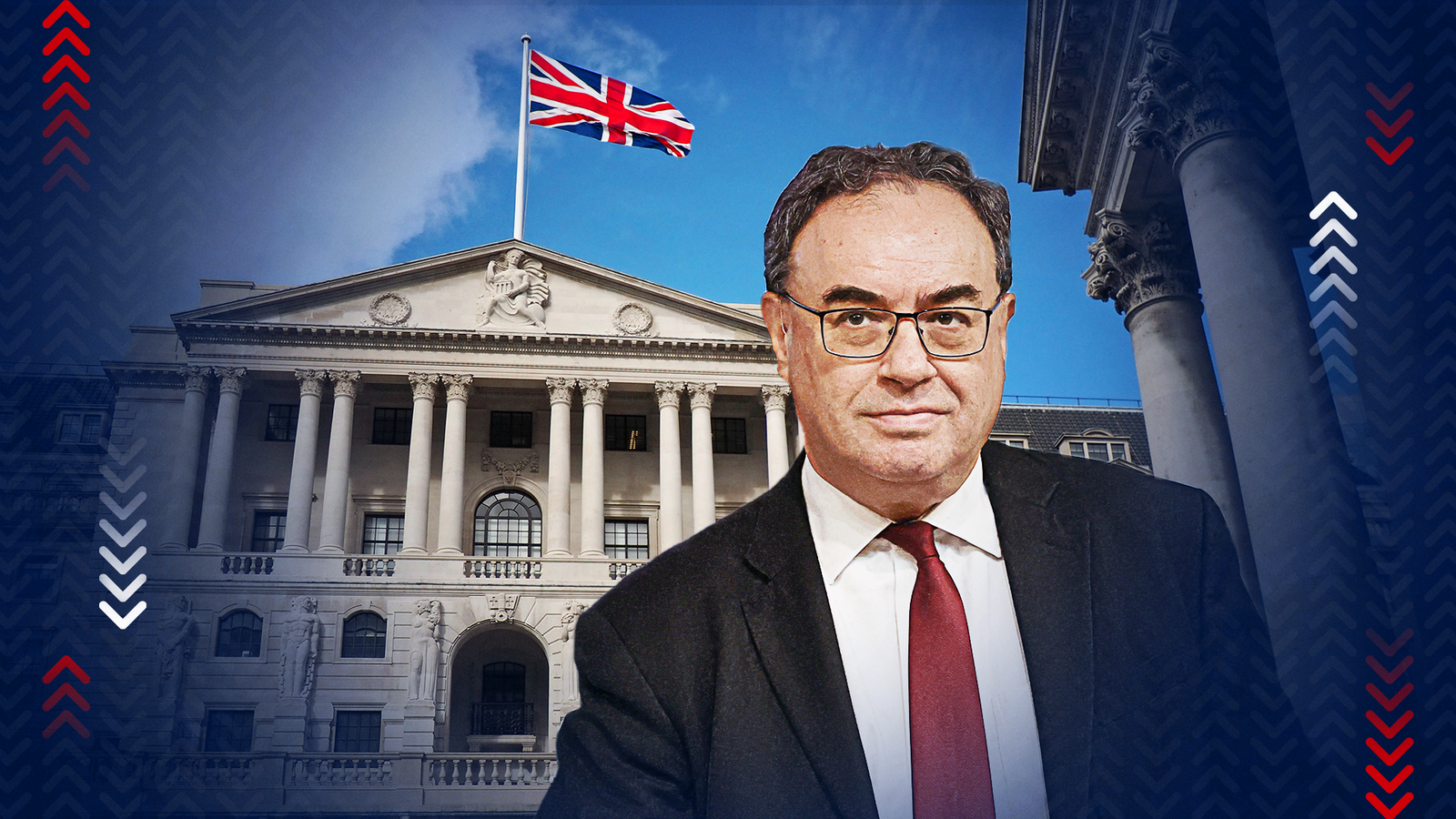Financial markets are now pricing in a shock interest rate cut for the UK at the next Bank of England meeting following remarks by its governor.
There was a huge shift in expectations after Andrew Bailey told the Guardian newspaper the bank could be “a bit more aggressive” in its approach.
He talked about inflation pressures being less persistent than expected but tempered his comments by saying that its main indicators on the pace of price growth would need to continue to fall.
Money latest: The great second home sell-off?
Mr Bailey also worried about the potential threat to prices from oil costs, given events in the Middle East. “Geopolitical concerns are very serious”.
“It’s tragic what’s going on”, he said of the escalation involving Israel and Iran’s proxies.
“There are obviously stresses and the real issue then is how they might interact with some still quite stretched markets in places.”
He said there appeared to be “a strong commitment to keep the (oil) market stable” but “there’s a point beyond which that control could break down if things got really bad.”
“You have to continuously watch this thing, because it could go wrong,” he concluded.
Oil costs have remained relatively stable this week despite worries over the potential threat to supplies in the event of a war between Israel and Iran.
Despite the caveats from Mr Bailey, 98% of market bets were on a rate cut of 0.25 percentage points for the Bank’s meeting on 7 November.
Ahead of Thursday’s market open, a majority of investors had expected no change to the rate until December, given sticky elements from services inflation and continuing pressure from the pace of wage rises in the economy.
The Bank had warned in August that it would take a data-driven approach to cuts beyond the quarter point reduction it introduced at that time.
Bank rate was held at 5% at September’s meeting.
August’s decline marked the first downwards move to borrowing costs since the Bank began hiking rates aggressively in December 2021.
The rises were initially a response to the price growth seen as the economy re-opened following COVID restrictions but inflation soon soared when Russia’s invasion of Ukraine sparked the energy-driven cost of living crisis.
Market hopes of a reduction as soon as the next meeting of the Bank’s monetary policy committee could help fixed rate mortgage costs ease further and more quickly.
Read more from Sky News:
Tesco sees sales growth after rise in premium shoppers
Fraud crackdown could see bank payments delayed by three days
Compass plots multimillion pay rise for CEO
The shift in rate cut expectations meant that the pound lost a cent against the US dollar and just shy of a cent against the euro.
Higher interest rates tend to be supportive of a domestic currency.
The FTSE 100 opened 0.2% up, with the weaker pound boosting constituents who make money abroad, as those revenues are worth more when booked back in the UK.


